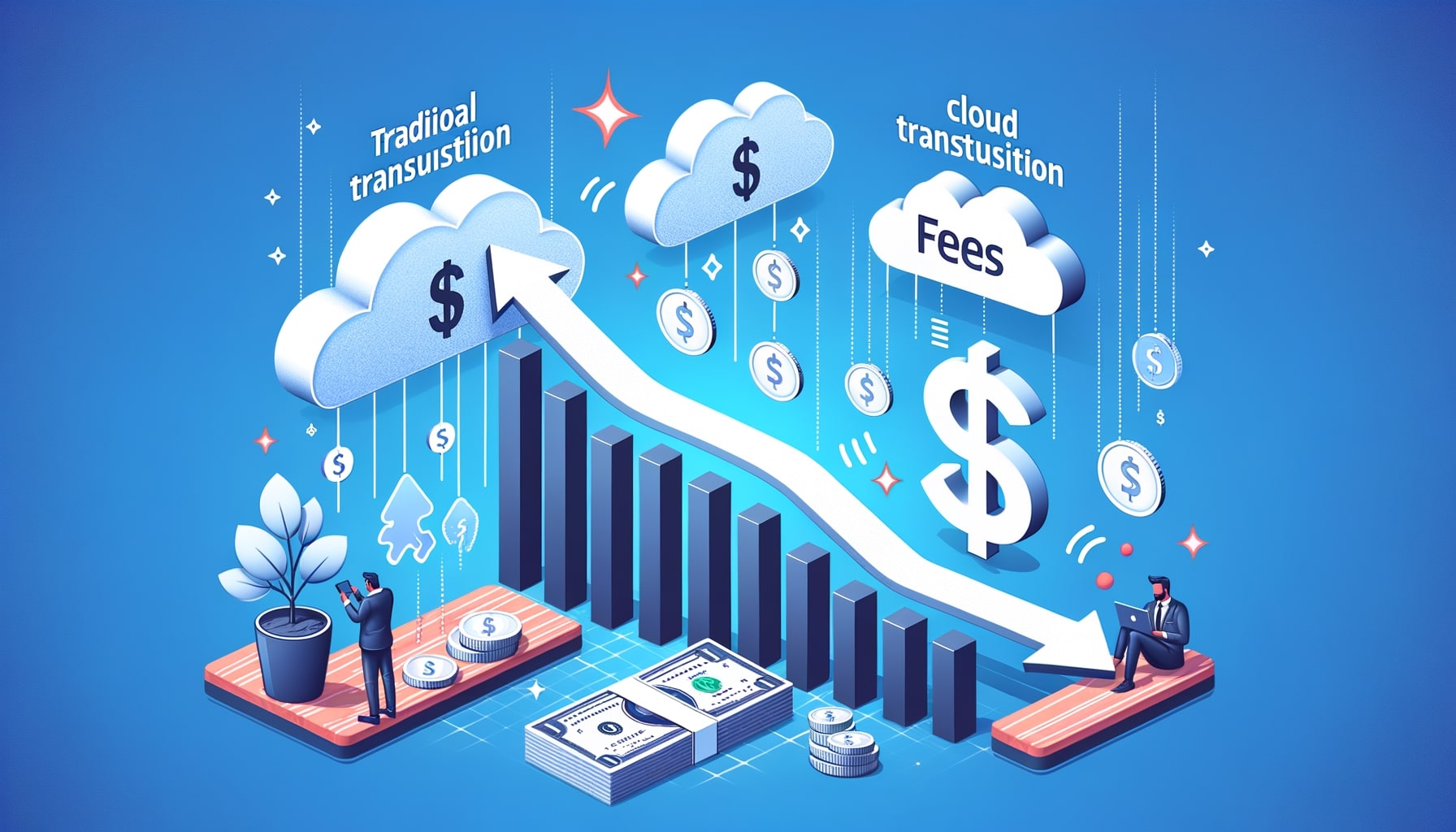Understanding the Cost of Cloud Payment Services
Cloud payment services have revolutionized the way businesses handle transactions and manage their financial operations. With the rise of cloud computing, businesses can now leverage the power of the cloud to process payments securely and efficiently. However, understanding the cost implications of using cloud payment services is crucial for businesses to make informed decisions and optimize their financial operations.
Cloud payment services refer to the use of cloud computing technology to process and manage payments. This technology allows businesses to securely store and process payment data in the cloud, eliminating the need for on-premises infrastructure and reducing costs associated with hardware and maintenance. Cloud payment services offer a range of features and benefits, including real-time transaction processing, enhanced security measures, and seamless integration with other business systems.
Factors Affecting the Cost of Cloud Payment Services
Several factors can influence the cost of cloud payment services. Understanding these factors is essential for businesses to accurately estimate their expenses and make cost-effective decisions. Some of the key factors affecting the cost of cloud payment services include:
- Transaction Volume: The number of transactions processed through the cloud payment service can significantly impact the cost. Most cloud payment service providers charge a fee per transaction, so businesses with high transaction volumes may incur higher costs.
- Payment Methods: Different payment methods, such as credit cards, debit cards, and mobile wallets, may have varying costs associated with their processing. It is important to consider the fees associated with each payment method when evaluating the cost of cloud payment services.
- Integration Complexity: The complexity of integrating the cloud payment service with existing business systems can affect the cost. Businesses with complex integration requirements may need to invest more in development and customization, resulting in higher costs.
- Security Requirements: Enhanced security measures, such as tokenization and encryption, may come at an additional cost. Businesses that require higher levels of security should be prepared to invest more in cloud payment services.
- Support and Maintenance: The level of support and maintenance provided by the cloud payment service provider can impact the cost. Some providers offer comprehensive support packages, while others may charge additional fees for support and maintenance services.
Understanding the Pricing Models of Cloud Payment Services
Cloud payment service providers offer various pricing models to cater to the diverse needs of businesses. It is important to understand these pricing models to accurately estimate the cost of using cloud payment services. Some common pricing models include:
- Flat Fee: Under this model, businesses pay a fixed fee per transaction, regardless of the transaction amount. This model is suitable for businesses with a consistent transaction volume and value.
- Tiered Pricing: In this model, businesses are charged different rates based on transaction volume or value. Higher transaction volumes or values may qualify for lower rates, incentivizing businesses to process more transactions.
- Interchange Plus: This model involves a combination of a fixed fee and a percentage fee based on the interchange rate set by card networks. It provides transparency in pricing and is suitable for businesses with varying transaction volumes and values.
- Subscription-based: Some cloud payment service providers offer subscription-based pricing, where businesses pay a fixed monthly or annual fee for unlimited transactions. This model is suitable for businesses with high transaction volumes.
Hidden Costs of Cloud Payment Services
While cloud payment services offer numerous benefits, businesses should be aware of potential hidden costs. These costs may not be immediately apparent but can significantly impact the overall cost of using cloud payment services. Some hidden costs to consider include:
- Data Storage: Cloud payment services often require businesses to store payment data in the cloud. Depending on the volume of data stored, businesses may incur additional costs for data storage.
- Data Transfer: Transferring payment data between the cloud payment service provider and other systems may incur data transfer costs. Businesses should consider these costs when evaluating the overall cost of using cloud payment services.
- Customization and Integration: Businesses with unique requirements may need to invest in customization and integration services, which can add to the cost of using cloud payment services.
- Compliance and Security: Meeting industry-specific compliance requirements and implementing robust security measures may require additional investments. Businesses should consider the cost implications of compliance and security when using cloud payment services.
Comparing the Cost of Cloud Payment Services with Traditional Payment Solutions
When evaluating the cost of cloud payment services, it is essential to compare it with traditional payment solutions. Traditional payment solutions, such as on-premises payment processing systems, may have different cost structures and considerations. Some key points to consider when comparing the cost of cloud payment services with traditional payment solutions include:
- Infrastructure Costs: Cloud payment services eliminate the need for on-premises infrastructure, resulting in cost savings. Traditional payment solutions may require businesses to invest in hardware, software licenses, and maintenance.
- Scalability: Cloud payment services offer scalability, allowing businesses to easily handle increasing transaction volumes. Traditional payment solutions may require additional investments in infrastructure to accommodate growth.
- Maintenance and Upgrades: Cloud payment services typically include maintenance and upgrades as part of the service, reducing the burden on businesses. Traditional payment solutions may require businesses to invest in regular maintenance and upgrades.
- Security: Cloud payment services often provide robust security measures, reducing the risk of data breaches and fraud. Traditional payment solutions may require businesses to invest in additional security measures, adding to the cost.
Strategies to Optimize the Cost of Cloud Payment Services
To optimize the cost of using cloud payment services, businesses can implement various strategies. These strategies can help reduce expenses and maximize the value derived from cloud payment services. Some effective strategies to optimize the cost of cloud payment services include:
- Analyze Transaction Volume: Businesses should analyze their transaction volume to determine the most cost-effective pricing model. Choosing a pricing model that aligns with the transaction volume can help reduce costs.
- Negotiate Pricing: Businesses should negotiate pricing with cloud payment service providers to secure favorable rates. Providers may be willing to offer discounts or customized pricing plans based on the business’s requirements.
- Optimize Payment Methods: Evaluating the cost associated with different payment methods can help businesses optimize their payment mix. Choosing payment methods with lower processing fees can result in cost savings.
- Streamline Integration: Simplifying the integration process can reduce development and customization costs. Businesses should work closely with the cloud payment service provider to streamline integration and minimize expenses.
- Regularly Review Service Providers: Periodically reviewing and comparing different cloud payment service providers can help businesses identify cost-effective options. It is important to consider factors such as pricing, features, and customer support when evaluating service providers.
Security Considerations and Cost Implications in Cloud Payment Services
Security is a critical aspect of cloud payment services, and businesses must consider the cost implications of implementing robust security measures. While cloud payment services offer enhanced security features, businesses may need to invest in additional security measures to meet industry-specific compliance requirements and protect sensitive payment data. Some security considerations and their cost implications include:
- Tokenization: Tokenization is a security measure that replaces sensitive payment data with unique tokens. Implementing tokenization may require businesses to invest in tokenization services or solutions, adding to the cost.
- Encryption: Encrypting payment data during transmission and storage is essential for maintaining data security. Businesses may need to invest in encryption technologies or services, which can increase the cost of cloud payment services.
- Compliance: Meeting industry-specific compliance requirements, such as Payment Card Industry Data Security Standard (PCI DSS) compliance, may require additional investments in security measures and audits. Businesses should consider the cost implications of compliance when using cloud payment services.
- Fraud Prevention: Implementing fraud prevention measures, such as real-time transaction monitoring and machine learning algorithms, can help businesses mitigate the risk of fraud. However, these measures may require additional investments in technology and resources.
Frequently Asked Questions about the Cost of Cloud Payment Services
Q.1: What are the main cost factors to consider when using cloud payment services?
The main cost factors include transaction volume, payment methods, integration complexity, security requirements, and support and maintenance.
Q.2: What are the different pricing models offered by cloud payment service providers?
Common pricing models include flat fee, tiered pricing, interchange plus, and subscription-based pricing.
Q.3: Are there any hidden costs associated with cloud payment services?
Yes, hidden costs may include data storage, data transfer, customization and integration, and compliance and security.
Q.4: How does the cost of cloud payment services compare to traditional payment solutions?
Cloud payment services often offer cost savings compared to traditional payment solutions due to reduced infrastructure costs, scalability, and included maintenance and upgrades.
Q.5: What strategies can businesses implement to optimize the cost of cloud payment services?
Strategies include analyzing transaction volume, negotiating pricing, optimizing payment methods, streamlining integration, and regularly reviewing service providers.
Conclusion
Understanding the cost of cloud payment services is crucial for businesses to make informed decisions and optimize their financial operations. Factors such as transaction volume, payment methods, integration complexity, and security requirements can significantly impact the cost. It is important to consider the pricing models offered by cloud payment service providers and be aware of potential hidden costs. Comparing the cost of cloud payment services with traditional payment solutions can help businesses evaluate the cost-effectiveness of adopting cloud payment services.
Implementing strategies to optimize costs, such as analyzing transaction volume and negotiating pricing, can further enhance the value derived from cloud payment services. Additionally, businesses must consider the cost implications of implementing robust security measures to protect sensitive payment data. By understanding the cost factors and implementing cost optimization strategies, businesses can leverage cloud payment services effectively and efficiently.










